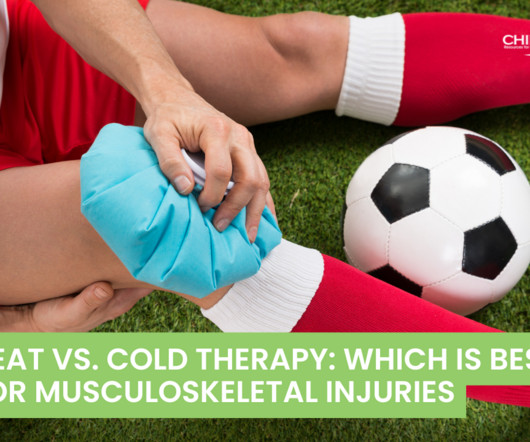Heat vs. Cold Therapy: Which is Best for Musculoskeletal Injuries
ChiroUp
NOVEMBER 14, 2024
When treating musculoskeletal injuries, chiropractors often face the key question of when to use heat vs ice therapy. Understanding the benefits of ice and heat therapy can significantly impact a patient's healing journey. How long to apply ice therapy: 10-20 minutes. International Journal of Sports Physical Therapy.














Let's personalize your content